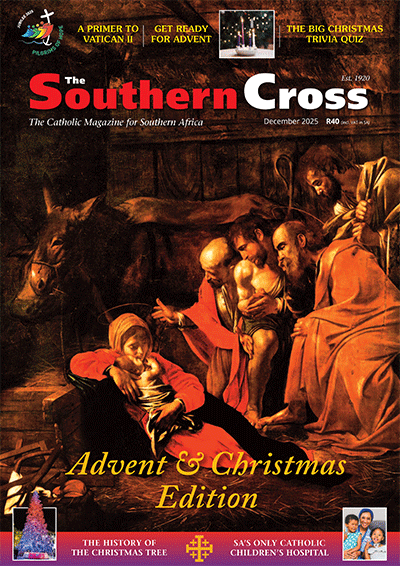Let there be living water
The idea of Christian unity as a �return� of one ecclesial community to another has posed a serious obstacle in the history of ecumenism, especially for those for whom a �return� seems impossible.
That is why there have been attempts to find better and more acceptable ways of conceiving, discussing and achieving Christian unity.
Today we no longer speak of ecumenism as �return�, and this new outlook has given the process a new breath, achieving significant strides in this on-going journey.
However, at the risk of appearing like I am pushing the clock backwards both in time and concept, I dare say Christian unity really is a �return�. And that begs the obvious question: Who returns to whom?
Let us first see how this return was understood in the past.
Every time when there was a threat of division, the Catholic Church has been committed to ensure reconciliation to safeguard the unity. Even after a separation happened, new efforts were made, according to the means and the understanding at the time, to heal the broken communion. At one time, the understanding of unity was very much in the sense of waiting and working to bring the so called �separated brethrens� back to the Mother Church.
This return to the Mother Church was not only in terms of communion with the bishop of Rome, but it meant also in some cases embracing the usages of the Roman Catholic Church, the Latin rite. For this reason, even Eastern Catholic Churches, although already in communion with Rome, were seen as still separated as long as they kept their proper rites. Somehow, they were still expected to fully come back.
That conception of ecumenism was rejected not only by the �separated brothers� but also by some sections within the Catholic Church. So when I refer to ecumenism as �return�, I do not think in terms of the past. I too find such return narrow and unworkable.
So, what kind of return am I talking about here?
The inspiration of ecumenism as �return� was born during my visit to Neot Kedumim, a biblical garden situated between Jerusalem and Tel Aviv in Israel. In this garden you have the reproduction of the biblical cultures. Once there, you can walk the Old Testament or the New Testament paths. I did the New Testament ones.
There were so many things I saw about the religious, cultural and natural life of the people in those New Testament times. Of all that, what touched me most was a humble cistern. Since then it has become for me a great image for Christian unity. Let me explain.
In Palestine we think of desert life. There is a very short rainy season and little rainfall. People who lived far from the sea, lake or river needed some mechanism to ensure that they had water for use. The cistern was one of those ways. It was a domestic water reservoir, still evident in the ruins of the old Palestinian settlements. In the Old City of Jerusalem, beneath the floors of some houses, there still are cisterns, though they are not used.
Rain water was collected and stored in the cisterns, thereby assuring a family of water supply for months. But it was the quality of such water that touched me most.
Imagine the water in the cistern for months! Stagnant! Thick! Smelly! Indeed, a breeding ground for insects, especially mosquitoes. Certainly it is not what we would classify as safe water. But people had to do with that.
At the same time, you can imagine people�s longing, yearning for the next rainfall when they would have the joy of drinking, bathing and cooking with fresh water. That is why when Jesus promises not just water, but fresh, living water (Jn 7:37-38), he is in fact just playing the right code. He is touching at the very need, the desire of the people. How does that link up with ecumenism, especially the return aspect?
Is it not true that in our state of division, cut off from others, somehow we have become wrapped up on ourselves, on our usages? We have closed on ourselves in a sort of stagnation of self-righteousness, pride and on our point of view. We have become so used to this that we might not realise how thick, how smelly and how unsafe is the water of our reservoir.
Christian unity is the challenge to open up our perspectives, especially to listen to this invitation of Christ. We are required to have the courage to abandon the security of our cistern water and return all together to one source, Christ himself, so that he can quench our thirst with fresh and living water. In fact, this fresh, living water is also an image of the Holy Spirit.
Ecumenism is exactly that: putting down our arms of defence, open our windows and doors to let in the breeze of the Spirit to refresh our dens. Ecumenism is to open our hand and let ourselves be led by the Spirit.
In this way, Christian unity is indeed a return. But it is not a return of one church or ecclesial community to another, but rather of all Christians setting themselves together on this shared march towards their one, and only one, source of living water, Christ himself.
- Are Saints Models to Emulate or Little Gods? - February 14, 2022
- Towards an African Pentecost! - June 4, 2017
- A Greek Orthodox Giant of Unity - August 3, 2015





